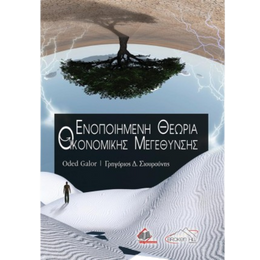Color Atlas of Ergophysiology: The Wisdom of the Moving Body (Chinese Edition)
This book aims to abridge the entire field of Ergophysiology. It is the evolution of previous versions in English and Greek on which I have worked over the years, planting the seeds, metaphorically speaking, in the “fertile soil” of Universities in the USA during the 1960’s, and diligently plowing the “field” over the years, first at McGill University in Montreal in the 1970’s and later on at the University of Athens, up to this day. I have been eclectically employing the research findings of numerous investigators who toiled passionately with a single aim in mind: to disperse the great clouds of ignorance. But I have been also motivated and inspired over the years by our many eager students, whose eyes, glowing with scientific curiosity, challenged me to do my best. The unique and salient feature of this book is its conceptual approach. The entire field of Ergophysiology is abridged in 100 autonomous, comprehensive illustrated concepts. Every concept is unveiled in only two pages. State-of-the-art scientific facts are highlighted for each concept on one page, while on the facing page, the nucleus of the concept is illustrated, along with focal points emphasizing important applications. All concepts are fully treated in eleven solidifying sections as follows:
Section 1: Bioenergetics of Muscular Activity. How energy is produced in the body, and how it is used during muscular activity, as well as how it limits human performance, is examined in 14 concepts. An enormous recent advancement indeed, which resulted primarily from the cornersone application of the muscle biopsy technique in humans.
Section 2: How Do Muscles Work. The mechanism of muscle contraction, and the admirable architecture of muscle fibers, as well as how their composition and action affect performance, is brought into focus with 12 concepts. In addition, we discuss muscle fatigue, muscle soreness, muscle cramps and muscle damage and regeneration.
Section 3: Bodily Responses to Exercise. How the lung and heart pumps supply the body with the amounts of air and blood, for the increased needs of energy metabolism during exercise, is discussed in 5 concepts, while the role of thermoregulation, neural and hormonal control, is also examined.
Section 4: Exercise Training & Adaptations. An insight into the physiological principles of training and the metabolic, cardiorespiratory and neuromuscular adaptations, is provided in 10 concepts. Besides, the fascinating findings that muscles, like brains, have memory are highlighted.
Section 5: Optimizing Athletic Performance. What makes champions exceptionally fast, strong, powerful and skillful and how they optimize their performance, is looked at in 10 concepts. We also raise the captivating question of whether genes and training alone are sufficient to make a champion, and discuss the role epigenetics play in reaching peak performance.
Section 6: Sports Nutrition. The need of food and fluids in athletes pre-exercise, post-exercise and during training, is documented in 7 concepts, while we emphasize that proper nutrition is indispensable to allow competitive athletes to train hard, recover quickly and maximize performance.
Section 7: Ergogenics. Five concepts focus on the effectiveness of some ergogenic substances and interventions by critically examining: first, what is their potential on enhancing athletic performance, and then, what are their effects on the athlete’s health, while doping is considered as a threat to the spirit of sport.
Section 8: Wonders of Exercise: The Evidence. Mounting research evidence on the harmful effects of inactivity, and the widespread health benefits from regular physical activity are highlighted and, particularly, it is stressed how the heart, brain and immune function benefit, and how elderly people live better and longer.
Section 9: Exercise Prescription for Health. Nine concepts present the latest scientific research disclosing the importance of personalized exercise for the improvement of health, muscular fitness, cardiorespiratory fitness and neuromuscular function.
Section 10: Exercise as Medicine. State-of-the-art research documentation, is highlighted in 10 concepts, regarding the preventive and therapeutic value of regular exercise on cardiovascular diseases, hypertension, pulmonary diseases, metabolic diseases, type 2 diabetes, neurological diseases, psychiatric disorders, musculoskeletal disorders, certain cancers, as well as on the reduction rate of all-cause mortality.
Section 11: Exercise Testing. The focus of this concluding section containing 10 concepts is on the physiological tests that are used to assess strengths and weaknesses and to monitor progress in people who engage in exercise programs.
Εξαντλήθηκε
| Διαστασεις (cm) : |
|
|---|---|
| Σελίδες : |
|
| Εξώφυλλο βιβλίου : |
|
Section 1. Bioenergetics of Muscular Activity
Section 2. How Do Muscles Work
Section 3. Bodily Responses to Exercise
Section 4. Exercise Training & Adaptations
Section 5. Optimizing Athletic Performance
Section 6. Sports Nutrition
Section 7. Ergogenics
Section 8. Wonders of Exercise: The Evidence
Section 9. Exercise Prescription for Health
Section 10. Exercise as medicine
Section 11. Exercise testing
Glossary
Anthology of Research Literature






